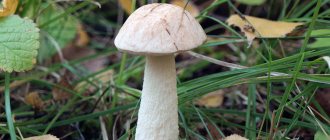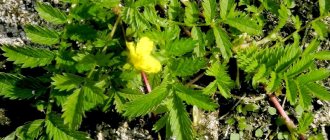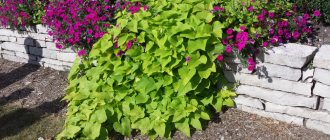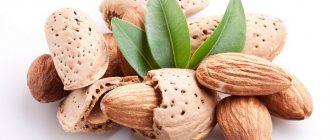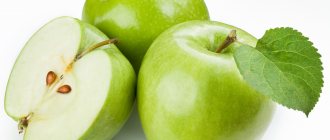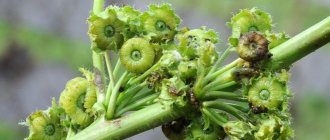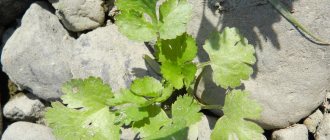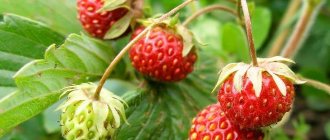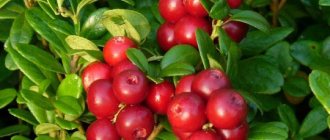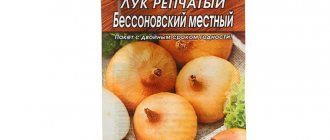Shepherdia - this beautiful word is used to describe the American variety of sea buckthorn. This shrub looks so aesthetically pleasing that it is used to decorate the landscape. Beautiful ruby berries are not only pleasing to the eye, but also bring many benefits. Drinks made from shepherdia fruits give energy and heal the body. The plant is unpretentious in care, so anyone can plant it in their summer cottage.
Where does it grow
The shrub grows wild in North America and Canada. Indigenous peoples used the berry for food and to treat various diseases. It became known to the world in 1818. It was discovered by Philadelphia botanist Thomas Nuttall. He sent plant seedlings to the European Botanical Society. The bush was named after John Shepherd, an English explorer who made a great contribution to the development of the botanical garden in Liverpool.
In our country, this amazing plant was spread by Ivan Vladimirovich Michurin, the famous Russian biologist and breeder. The fruits captivated him with their unusual taste and appearance. The scientist even planted a shrub in his own garden. Now it is growing not only in the USA, Canada and Europe, but in our country.
Shepherdia in landscape design
Many landscape designers love to use silver shepherdia for its unusual foliage color. Another distinctive feature of this variety is its abundant fruiting, which makes any composition more colorful. Shepherdia is well suited for hedges and for strengthening cliffs due to its well-developed root system.
Low growing varieties are good for creating backgrounds. It can be combined with a bush rose, which gives an aristocratic touch. Low bushes are planted along garden paths and around the house. Shrub species with a large, spreading crown are suitable for creating a screen in front of low and bright plants.
Shepherdia is combined in compositions with evergreen shrubs and trees, with coniferous species or perennials with purple foliage: serviceberry, barberry.
Shepherdia retains its decorative properties throughout the season: in spring due to the abundance of flowers, in summer due to its lush crown, and in autumn due to abundant bright fruits.
Titles
Perhaps no plant has as many names as shepherdia. In America it is called “buffalo”, or “buffalo berry”, as well as “rabbit berry”. It is believed that these nicknames came from the fact that locals traditionally prepare berry gravy, serving it with bison (and rabbit) meat. According to another version, wild artiodactyls happily eat shepherdia fruits, just as our bears do.
Another interesting name is “soap berry”. The fruits acquired it because of the slippery sensation that appears on the skin if you roll them in your palms. Hands become slightly soapy. The fruits are also called “Nebraska currant”, “American sea buckthorn”, “silver leaf”. Shepherdia received a rather unusual name - “crucified berry” for the structure of its leaves, which are arranged crosswise.
Nutritional value and calorie content
Thanks to the rich composition of vitamins and microelements in shepherdia fruits, scientists, after conducting a series of studies, began to call it a new “super fruit”. Nutritional value and chemical composition per 100 grams of the edible part of the berries:
- Calorie content – 28 kcal;
- Proteins – 0.5 g;
- Fats – 0.2 g;
- Carbohydrates – 3.7 g.
Shepherdia berries are a powerful source of vitamins A and C, ahead of sea buckthorn, which is a relative of shepherdia; its berries contain:
- Carotenoid - performs A-provitamin activity, which is necessary for vision, growth, reproduction and protection against bacterial and fungal diseases.
- Fiber – stimulates intestinal motility and reduces cholesterol levels.
- Lycopene is an antioxidant, the balance of which in the body prevents the development of heart disease and the development of cancer cells.
In addition, the berry is rich in organic acids and pectin, vitamins B and P. Shepherdia silver is the leader in the content of vitamins and biologically active substances among many berries, fruits and vegetables.
What does it look like
The Shepherdia shrub belongs to the Lokhov family. This is a low perennial plant with a thin trunk. It stretches up to 3-5 meters, sometimes up to 7. In our country, a tree related to shepherdia, sea buckthorn, is more common. It has the same leaves, but the fruits differ in shape and color. The taste of the berries also varies.
The trunk of the bush is rough, gray-yellow. The branches extend to the sides, so the crown is spreading. A special feature of the structure of the tree is the presence of thorns. They are lined with all the branches diverging to the sides. Just starting to grow, thin trunks branch and cross, often at the very bottom. The plantings create a real hedge that cannot be overcome.
The leaves have an elongated oval shape. They are small - 4-6 cm long, with a dense structure. The small leaves have a bright green tint. The upper and lower parts are equipped with fibers, from which the rays of the sun are reflected. They seem to be sprinkled with fine pollen. From a distance, the branches appear silvery, which justifies the name “silverleaf.” This color creates a contrast with the bright red fruits. It looks very impressive. In the USA they like to decorate buildings with shepherdia bushes. It is widely used in landscape design.
Existing types
The Shepherdia family includes only three representatives. Breeders became interested in this plant quite recently, so experiments on breeding large-fruited varieties have not yet yielded sustainable results. The same can be said about attempts to cross Shepherdia with sea buckthorn. This direction is recognized as very promising - it is possible to combine the productivity and large-fruitedness of sea buckthorn with the resistance to diseases, pests, and unfavorable climatic and weather conditions characteristic of shepherdia.
Most often in gardens you can find silver shepherdia (S. argentea). It is a tree-like shrub with thorny branches, reaching a height of 5–6 m. Young greenish-silver shoots gradually change color to gray-brown. The leaves are medium-sized, 3–5 cm long, elliptical in shape with a pointed tip. Due to the characteristic pubescence, they have a silver cast on both sides. The fruits are 5–6 mm in diameter and weigh about 0.5–0.7 g. They ripen at the end of summer, although they acquire their characteristic color already in July.
Silver Shepherdia is most often found in garden plots
There are selective hybrids with bright yellow fruits - Xanthocarpa and Goldeneye. But these are recent achievements of breeders, which are still extremely rare in the public domain. Finding them is very difficult, even abroad.
Video: what silver shepherdia looks like
Canadian shepherdia (S. canadensis) is much less common in captivity. It has an undeniable advantage - the absence of thorns, but it is capable of performing an exclusively decorative function. Its fruits are small, yellow-orange, and have practically no taste. It also does not differ in growth rate, the maximum height is 1.5–2.5 m. The leaves are grayish-green or olive, glossy, ovoid.
The main advantage of Canadian shepherdia is the absence of thorns, but its fruits are rarely eaten.
The last representative of the genus is Shepherdia roundifolia (S. rotundifolia). This is an endemic plant, found naturally only in the state of Colorado. It does not differ in winter hardiness, therefore it is not suitable for cultivation in most of Russia. Its leaves are covered with small wart-like growths and are located very densely on the branches. At the same time, they are quite fleshy, so under their weight the shoots bend to the ground, forming a beautiful cascade. The flowers are very small, yellowish. The fruits are not eaten.
Shepherdia rotundifolia is an endemic plant of Colorado that is not frost-hardy, which seriously hinders its spread among amateur gardeners.
Fruit
Flowering begins at the end of March. It must be said that during this period the plant does not have the most spectacular appearance. The buds are very small and inexpressive, dirty yellow in color. They sprinkle the branches thickly, spreading a honey aroma. This smell attracts pollinating insects. After a short flowering period, leaves appear.
American buckthorn is a dioecious plant. That is, the flowers on it are either only female or only male. Therefore, for fruit ripening, trees of different sexes are needed. This aspect must be taken into account when growing shrubs in a summer cottage. The sex of a tree can be determined by the structure of the calyx. Male flowers are larger than female ones, they lack a pistil, and there are many stamens.
Later, fruits form in place of the flowers. They cling to the branches as tightly as the inflorescences. Shepherdia berries are colored red or red-orange. The peel is sprinkled with small white spots and dots. This is another feature of the plant. There is a small seed inside the fruit. Picking berries is easy - just shake the branch. This property compares favorably with sea buckthorn, which takes a long time to collect. At one time, fruit-bearing bushes produce up to 15 kg of harvest.
Buffalo berries have soft, jelly-like flesh. Fresh fruits taste sour and slightly tart. Because of the astringent sensation in the mouth, not everyone likes to eat it straight from the bush. Drinks and jam are mainly made from American sea buckthorn. The berries left on the bushes before the first frost acquire a sweeter taste.
Shrub care
Caring for shepherdia will take the gardener a minimum of time and effort. Even those who do not have much experience in the relevant field are guaranteed to cope with its cultivation.
Shepherdia is frost and drought resistant and is undemanding to soil quality. She does not need shelter for the winter; she can easily get by with natural precipitation. Although she gratefully responds to additional watering and fertilizing, organic or mineral.
Shepherdia tolerates the most severe frosts without damage, so it does not need shelter for the winter.
Any plant needs water during the formation and ripening of fruits. Therefore, if the summer is hot and dry, it is advisable to water the shepherdia once every 8–10 days, spending 25–30 liters per adult bush.
Shepherdia can easily get by with natural precipitation, but regular watering during the summer has a positive effect on yields
Every time after watering or rain, the soil must be loosened very carefully. Shepherdia's root system is developed, but superficial. Regular weeding is also important. Weeds take away the necessary nutrition from the plant and interfere with normal aeration. Mulching will help significantly save time on weeding. If there is no need for planting material, root shoots are also removed by digging up the soil and cutting off the roots. It is not recommended to leave “stumps”.
You can fertilize two or three times during the season. In spring, the plant needs nitrogen. This can be rotted manure or humus (15–20 l), distributed over the tree trunk, urea, ammonium nitrate, ammonium sulfate (10–15 g per 10 l of water) or an infusion of nettle greens, dandelion leaves (or any other weeds).
Urea, like other nitrogen-containing fertilizers, stimulates the plant to increase green mass, which is very important in spring
During the formation and ripening of fruits, the bushes are fed with phosphorus and potassium (25–30 g of simple superphosphate and potassium nitrate per 10 liters of water). A natural alternative is an infusion of wood ash (a liter jar containing 3 liters of boiling water). After harvesting, the same fertilizing is repeated. You can also use complex preparations (ABA, Autumn).
Wood ash is a natural source of potassium and phosphorus
Shepherdia is distinguished by its growth rate and branching intensity, so the only mandatory procedure for caring for it is pruning. Such plants look much neater and more decorative. It is advisable to limit the height to 2–2.5 m, shortening the side shoots to the first branches. This makes harvesting much easier. This procedure is carried out every 3–5 years.
As it gets older, the growth rate slows down, so every 7–8 years shepherdia needs rejuvenating pruning. All existing shoots older than this age are removed completely, the rest are shortened by the growth of the last two to three years. This stimulates the bush to further branch, promotes increased yield and increased fruit size.
To trim shepherdia, use only sharply sharpened and disinfected tools.
Every year in spring and autumn, sanitary pruning is carried out, getting rid of broken, dried out and poorly located shoots directed downwards and deeper into the crown.
Varieties
There are three species of plants in this class. Their names:
- Silver – Argentea
- Canadian - Canadensis
- Round-leaved - Rotundifolia
They differ in the shape of the leaves, size and color of the fruits. In order to obtain a harvest, the first type of shrub is cultivated. The last two are considered more decorative.
Argentea
This variety is more similar to our sea buckthorn. It has the same narrow and long leaves, densely scattering the branches of the tree. The surface of the leaf on both sides is covered with many fibers, which is why they appear silvery. Berries up to 6 mm in diameter. The ripe fruit is painted in scarlet colors, orange-red shades predominate. The Zolotoe Oko variety, bred by breeders, belongs to this species; its berries are juicy yellow in color, which appear golden in the sun.
Canadensis
The Canadian species of shepherdia is mainly used to decorate local areas. Its berries are small, with unexpressed taste. The fruit size is from 4 mm, the shape is oblong. The leaves are dark green, with a gray tint, and oval. The edge is present mainly on the lower side. This variety does not form thorns. The trunk height is small - the trees stretch only up to 2-2.5 m.
Rotundifolia
Round-leaved shepherdia is a tall shrub with a spreading crown. The branches diverging to the sides are strongly twisted and intertwined. The peculiarity of this variety is its rounded thick leaves with an edge, dotted with growths. The trees produce abundant flowers and many fruits. Under the weight of foliage and berries, the crown often bends to the very bottom, which is a beautiful sight. Silver-olive foliage, with clusters of scarlet berries, cascades down from the top of the crown to the ground.
Varieties
The following types of shepherdia are distinguished.
Silver
1
It received this name because of the whitish fluff that covers the branches and leaves. This species usually grows to 5–6 meters. It begins to bloom in April and bears fruit in September. Silver shepherdia berries are red or yellowish-orange. In North America, the plant is used to combat landslides on slopes.
Canadian
1
A tree with smooth leaves of a dark green hue can be found both in the lowlands and at alpine heights. It begins to bloom in mid-April. The berries appear in September - oval-shaped, red.
Round-leaved
1
The leaves are round, dark green, the branches are closely intertwined. This species blooms and bears fruit more abundantly than others. Mainly found in Colorado, it is almost impossible to see the plant outside of it.
Benefit
The fruits of the “Nebraska currant” are a valuable product used in folk medicine. Their pulp contains a huge amount of vitamin C, much more than the sea buckthorn we are used to. Other useful substances in the berry:
- carotene
- pectin
- sucrose
- catechins
- tannins
- organic acids
- vitamins A, P, E
Due to the presence of ascorbic acid, the berry is considered an excellent immunomodulator. Its use helps to resist colds and infectious diseases, eliminates depression. Vitamin E helps rejuvenate skin cells, making it smooth and elastic. Carotene is needed for good vision and a healthy vascular system. It cleanses the body of harmful substances and protects against harmful bacteria. Shepherdia fruits have the following effects on human health:
- improve the functioning of the stomach and intestines;
- treat urinary tract diseases;
- work as a choleretic agent;
- clean blood vessels from cholesterol deposits;
- increase the elasticity of capillaries and arteries;
- prevent the appearance of cancerous tumors.
The berries have bactericidal and anti-inflammatory properties. Decoctions of shepherdia berries and leaves are useful to take in the autumn-winter period, when epidemics of influenza and acute respiratory infections begin.
Contraindications for use
When using red sea buckthorn in nutrition and treatment, you must remember that it can cause harm :
- people with individual intolerance to plant components;
- pregnant and lactating women;
- people suffering from stomach ulcers;
- having inflammatory processes in the duodenum.
Shepherdia fruits contain the substance tetrahydroharmol, which has a psychedelic effect on humans. Therefore, it is recommended to observe moderation in their consumption.
If you have chronic diseases and during their exacerbations, you should take products that include red sea buckthorn after consulting your doctor .
Use in cooking
Buffalo berries are especially tasty when caught by the first frost. The pulp becomes sweet and tender. Fresh fruits are eaten separately or by adding other autumn berries to them: lingonberries, currants, cranberries. It is ground with sugar and stored in jars throughout the winter. Fresh fruits are also frozen in the freezer so that, if necessary, they can be made into a drink or added to baked goods. American sea buckthorn is used to prepare:
- fruit drinks, compotes
- preserves, jams
- jelly
- marshmallow, marmalade
- jelly
- liqueurs, tinctures
- cheesecakes, pies
- smoothie
- sauces
Features of shepherdia
Shepherdia is a perennial shrub whose height can vary from 3 to 7 meters. In nature, there are both deciduous and evergreen forms. The surface of the thin branches is covered with rough gray-yellow bark. The shoots are highly branched along their entire length and have long spines on their surface. Over time, the branches intertwine with each other and bend towards the soil surface, as a result of which the bush becomes more like a thorny hedge.
The stems are decorated with rich green short-petioled opposite oval or lanceolate foliage. The structure of the leaves is quite dense, and their length can vary from 40 to 70 millimeters. Either only on the back or on both surfaces there is a silvery coating, which is short, scaly fibers.
The shrub blooms in the last days of March, and it forms spike-shaped inflorescences, which consist of very small axillary flowers. In this case, flowers appear on the bush earlier than foliage. In flowering shepherdia, the branches are densely covered with flowers, which are attached to the stems with the help of short pedicels. Please note that this crop is dioecious. This means that there are bushes with only female or only male flowers. If you want not only to admire shepherdia, then you will have to plant at least 2 bushes: male and female. At the same time, experts advise planting a maximum of 7 to 10 female bushes per male bush. Please note that male flowers open slightly later than female ones. In order for flowers to be pollinated, insects are needed. After pollination, small round berries are formed in place of the buds.
The drupes are covered with a red skin, on the surface of which there are a large number of whitish small dots. You can eat the berries. Their pulp is very tender and has a sweetish-sour tart taste. Shepherdia fruits are most often used to make jellies, jams and compotes, and are rarely eaten fresh. Drupes do not fall off the branches until frost. Frosted berries become much sweeter and tastier. Inside the drupe there is one flattened seed.
The shrub will be able to bloom and bear fruit only in the third or fourth year of growth. After full ripening, the berries easily fall off the branches, so harvesting is very simple. From one mature bush you can harvest about 15 kilograms of berries per year.
Recipes
American sea buckthorn makes excellent invigorating compotes and fruit drinks. In order to increase the nutritional value, you can add other healthy berries to them.
Compote
The combination of raspberries and buffalo berries will fill the drink with the sweet aroma and taste of wild berries. For 1.5 liters of water and a glass of sugar, take 250 g of raspberries and shepherd berries. The fruits are washed and filled with two glasses of water. Add sugar, cook until boiling, stirring. Then add the remaining water and keep on medium heat for another 10-15 minutes. The compote is cooled to a warm state.
Mousse
Beat 350 g of shepherdia berries in a blender with half a glass of granulated sugar. The mixture is filtered and the cake is discarded. The juice is poured into a saucepan and placed on the stove. Agar-agar is dissolved in water according to the instructions. When the juice boils, remove from heat and pour in agar-agar. When it cools down a little, add a tablespoon of liquid honey and lemon juice to the mixture. Mix everything, pour into a mold, and put in the refrigerator.
Shepherdia silver: beneficial properties and contraindications
Official medicine shows little interest in the plant. I could not find convincing publications devoted to the study of its capabilities. But the Indians have used the fruits for centuries as a vitamin supplement, an immunomodulator and a prophylactic that protects against many diseases. This is evidenced by the publications of Canadian authors (1998 Native American ethnobotany. Portland, Or.: Timber Press. Scully, Virginia).
The most pronounced properties of shepherdia:
- anti-inflammatory,
- antioxidant,
- bactericidal.
Native Americans used shepherdia for food and medicinal purposes long before the arrival of the colonists. With its help, they treated constipation, tuberculosis, stomach diseases, and fever. Using infusions and decoctions, they removed swelling, relieved headaches, and accelerated the healing of wounds and cuts.
It was noted that the fruits relieve itching from insect bites, improve skin condition, and solve some gynecological problems.
Moderate consumption provides health benefits:
- reduces the risk of colds and flu,
- increases appetite;
- inhibits the development of atherosclerosis;
- has a mild choleretic, diuretic effect;
- normalizes digestion;
- stabilizes blood pressure;
- protects against heart and vascular diseases;
- improves skin condition;
- accelerates recovery after illnesses;
- increases the elasticity of veins;
- supports eye health;
- stimulates metabolism.
The beneficial properties of shepherdia are due to high levels of biologically active substances with low calorie content. This makes the product an excellent addition to the menu during diets and fasting days.
Shepherdia gives a good effect as part of homemade face masks. The procedures even out the tone, get rid of age spots, smooth out wrinkles, and give the skin elasticity. For the simplest anti-aging mask, do the following:
- Mash a tablespoon of fruit with a fork or masher.
- Squeeze the juice through 2 layers of gauze.
- Add 0.5 teaspoon of natural honey.
- Distribute over the face in the direction of the massage lines (from the center to the periphery).
- After 10-15 minutes, rinse with warm water.
- Pat your skin dry with a clean towel and apply a suitable cream.
Before first use, do not forget to do a skin test to make sure there is no allergy.
Possible risks
An absolute contraindication is individual intolerance, a tendency to allergic reactions. Most authors advise not to take risks, not to use the product for pregnant women, lactating women, children, as well as those who suffer from stomach ulcers and other chronic diseases. All diet changes should be discussed with your doctor.
A number of foreign sources note that excessive consumption of berries causes severe diarrhea.
Growing
The plant is quite unpretentious, which is a big plus for growing in the middle zone of our country. Trees can be planted on almost all types of soil. For shepherdia, soil with a small admixture of clay and sand is perfect. It will grow even on rocky soil. It is planted in muddy areas, adding gravel. The shrub is not afraid of frost and dry periods. For good fertility, the tree should be planted in an open place with access to sunlight.
The roots of the plant are located close to the surface of the earth. Since they are well developed, shepherdia grows well on slopes and crumbling soils. It can be planted along the edges of the site to protect it from erosion. For American sea buckthorn, you should not choose a low place where water stagnates. In this case, you need to drain the soil to provide air access to the roots. It is best to plant plants in the Siberian regions in the spring, since frosts can suddenly strike in the fall. Over the summer the tree will get stronger and take root. Plant a plant in one of the following ways:
- Seeds
- By cuttings
- Root shoots
Seeds are sown in open soil before winter, in late October - early November. They deepen it to a distance of 2-3 cm. After snow falls, it is raked to the sowing site to create a shelter. Sprouts appear in April, by September they grow to 12-17 cm. When planted this way, shepherdia begins to bear fruit after 5-6 years.
For propagation by cuttings, the tops of annual shoots with several buds are cut off. After soaking for one day in a root-forming solution, they are planted in the ground to a depth of 4 cm. For the first month, it is necessary to cover the cuttings with film or plastic containers to ensure a greenhouse effect. They need to be moistened and ventilated every day. When the roots grow and strengthen, the cuttings are transplanted to the area chosen for this.
It is best to propagate the plant by root cuttings; in this case, it will begin to bear fruit within 2-3 years. Every year shoots appear on the roots of an adult tree. The soil in this place needs to be excavated and the shoot carefully cut off from the root. The cuttings are immediately planted in a permanent place. To protect from cold and heat, you need to cover them with material intended for this purpose. After the leaves appear, the coating is removed.
This unpretentious plant will decorate your summer cottage with bright scarlet clusters. In winter, drinks made from its fruits will lift your spirits and improve your health.
Plant propagation
Reproduction is carried out by seed, cuttings, and root shoots.
Seed method
You can get the grains yourself. For this purpose, the fruits are ground into a pulp and dried in the sun, then the grains are separated. Planting is carried out during the harvest season, because germination is not maintained.
Grains are planted in greenhouse conditions that are not heated. The seeds are buried two to three cm. The emergence of seedlings can be expected in the last days of April. By the autumn season, the plants grow up to fifteen cm and are transplanted to a selected area. A crop grown by seed method is distinguished by the preservation of all varietal characteristics. Fruiting begins after five years.
Reproduction by root suckers
Overgrowth is used, which is formed at a distance of one and a half to two meters from the bush. Two-year-old shepherdias are taken. The soil is excavated, the shoot is cut off from the main bush, and dug up. The sections are disinfected. The bushes are planted immediately in a permanent plot. Watering and shading are carried out.
Cuttings
Cutting - the upper or middle part of the shoot. Those shoots that have not yet become woody are selected. Cuttings are prepared in the first days of July. The further algorithm is completely identical to cuttings of other berry bushes.
Advantages and disadvantages
The culture has a number of advantages, including beneficial properties for human health:
- unpretentiousness to growing conditions and care;
- high degree of frost resistance;
- lack of susceptibility to fungal infections and pest attacks;
- ease of reproduction;
- good transportability;
- medicinal properties: copes well with colds and helps overcome viral infections, has a great effect on overall well-being and strengthens the immune system, normalizes the functioning of the digestive and cardiac systems, strengthens blood vessels and capillaries, prevents atherosclerosis;
- Possibility of use in cooking.
Ripe berries are used in cooking and folk medicine
Landing rules
The Shepherdia tree does not require special growing conditions. Its branched root system allows it to grow in rocky and steep areas.
Recommended timing
The best time for planting is spring. This is especially true in the Urals and Siberia. In the spring, Shepherdia is planted in April, when the soil has thawed, but the buds have not yet woken up.
Choosing a suitable location
Shepherdia bushes are planted in sunny places. She needs space. Low swampy places where fog and stagnation of groundwater are possible are not suitable.
Soil preparation
Sandy and loamy soils will be good. They are quite nutritious and fluffy. Shepherdia itself can improve the soil in which it grows. Balls of bacteria located on the roots provide the soil with nitrogen.
Important! Heavy soils are not suitable for growing it.
Selection and preparation of seedlings
For planting, seedlings with a developed root system are used. Cut off dry and diseased roots. Healthy ones are cut to 3 cm without touching the nodules. The branches are shortened by 1/3. The seedlings are placed in a solution of "Epin", "Heteroauxin" or potassium permanganate.
Algorithm and landing scheme
Planting and caring for Shepherdia is nothing special. First of all, prepare a planting hole 50 x 50 x 50 cm. A mound of fertile soil is poured into the middle. A seedling is placed on it, the roots are straightened.
The seedling is sprinkled with earth, and it is lightly shaken to compact the soil. Plantings are watered and mulched. Leave 1.5-2 m between seedlings. If you plan to make a hedge, half a meter is enough.
